Brother Of Collapsed Building’s Owner Shot Dead In Iran
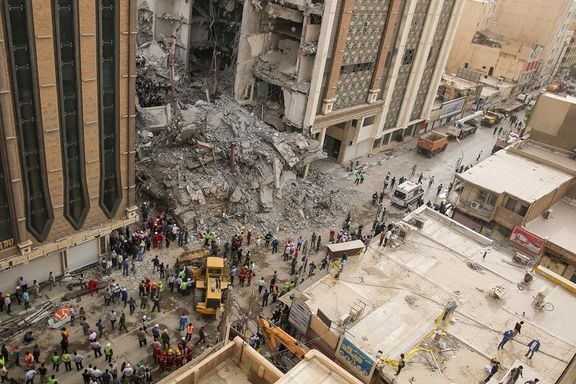
The brother of Hossein Abdolbaghi, whose poorly-constructed building recently collapsed in southern Iran and killed dozens of people, was shot dead by unknown assailants Saturday.

The brother of Hossein Abdolbaghi, whose poorly-constructed building recently collapsed in southern Iran and killed dozens of people, was shot dead by unknown assailants Saturday.
A video from a CCTV camera was released on media showing a car, which apparently was following Majid Abdolbaghi’s vehicle as it went into the parking lot, stopped in front of a building, as one man started shooting with a handgun from the front seat and another one got out of the car and started shooting from behind the car. According to reports Abdolbaghi succumbed to injuries after he was taken to hospital.
The Metropol twin towers collapsed on May 23 burying more than 80 people under the rubble, with about 42 bodies recovered. Soon after the collapse it became apparent that the owner and builder, Hossein Abdolbaghi, was a powerful and politically well-connected businessman who had disregarded regulations and building codes, backed by officials, who might have had their own financial interests.
Following the incident, Iranian media initially reported that Abdolbaghi, who was reportedly connected to Iran’s top security official Ali Shamkhani, had been arrested, but the government later announced that he had died in the collapse. The public did not believe the claim and many said that he escaped and corrupt officials, who had allowed him to violate building regulations, wanted him to disappear.
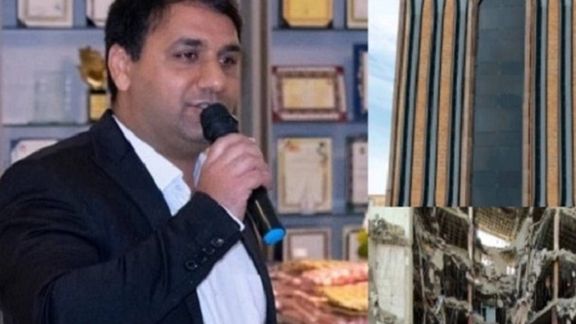
In June, reports came out that a physician who refused to cooperate in the alleged coverup had died mysteriously.
Earlier in the week, Iran’s prosecutor general issued an indictment against 20 people accused in the case of the Metropol incident.

Sociologist Ahmad Bokharaei warns that divisions authorities intentionally create in society will eventually push Iranians to take up arms against each other.
Bokharai also warned in an interview with the moderate Rouydad24 news website that excessive restrictions on society is likely to lead to revolts. He further warned that the government-fabricated bipolarity might lead to conflicts between ethnic groups.
The sociologist said the government's strict control over the media leaves no room for critics of hardliners dominating the government.
During recent weeks the government has unleashed its so-called chastity squads to crackdown on women who do not wish to observe compulsory hijab. Patrols and roadblocks by the morality police and vigilante hardliners have led to a series of confrontations in the streets and on public transport with women who are seen as not fully covering their heads and bodies.
In several social media videos men and women are seen confronting each other and pushing one other out of trains and buses as government’s forced hijab enforcers try to intimidate women for their “lose headscarves”.
While Iranian reformists and some well-known regime apologists call these conflicts “social bipolarity” between two groups of people, many Iranians on social media point out that this is in fact a conflict between the government and those who oppose it. They accuse the apologists of portraying a political problem that is occurring because of the despotic and totalitarian nature of the Islamic regime as a divide between two segments of the Iranian society.

Although the conflict is wider than the issue of hijab, most recent cases, including the one in a video posted by moderate cleric Rahmatollah Bigdeli on Twitter, involved intimidation by government hardliner supporters linked to the IRGC and other parts of the core of the fundamentalist regime. At least in one case a young woman who argued against compulsory hijab with an enforcer was arrested and the woman who confronted her and was pushed out of a bus, was praised by several religious officials and the state television as a hero.
Ahmad Abdollahi a religious official in Esfahan charged that women who are against the idea of compulsory hijab are the same women who keep dogs as pets and get rabies from their dogs!
Reformist activist Majid Tavakoli says, "Bipolar divisions are created by the government to give the sense of power and supremacy to its supporters who fight for the regime's survival." Another Twitter user argued that "A bipolar conflict takes place between two equal forces. But when one side has all the power and the other side is absolutely powerless, what the latter does is resistance."
Bokharaei said that such bipolarity might also occur in economic and cultural spheres as the government highlights and boosts divisions between insiders and the rest of the population. Pointing out that clusters of people are being formed at both ends of this bipolarity, and the government is constantly supporting one of the poles against the other, the sociologist warned that the escalation of these divisions might pose a danger for the clerical regime far more serious and detrimental that it could ever imagine.
Bipolar situations give way to disillusionment and eventually push society toward a quick implosion, he warned.

Heavy rains and subsequent flash floods in three cities of Iran’s southwestern Fars province left at least 21 dead on Friday while a search operation is ongoing for several missing people.
People in the cities of Darab, Neyriz, and Estahban and about 10 of their surrounding villages in the Fars province were affected by floods.
Hossein Darvishi, the CEO of Red Crescent Society of Fars Province, said 74 people were rescued from the flooded areas.
Estahban’s governor, Yousef Kargar, criticized the province’s meteorological organization for not issuing any warning about the precipitation.
In response to this criticism, the Meteorological Organization of Fars Province said it announced on Wednesday evening, July 20, the possibility of showers and thunderstorms for Friday.
In March 2018, a flash flood in the province led to the death of 44 people.
The director of Crisis Management of the province’s governorate, Khalil Abdollahi, said that at least 15 cars were also stranded in the flood.
Iran has been suffering from drought for at least a decade and this year officials have been warning of a further decrease in precipitation. However, Iran’s metrology department had warned about possibly heavy seasonal rainfall across the country. The dangers of flash floods have been exacerbated by the widespread construction of buildings and roads near riverbeds.
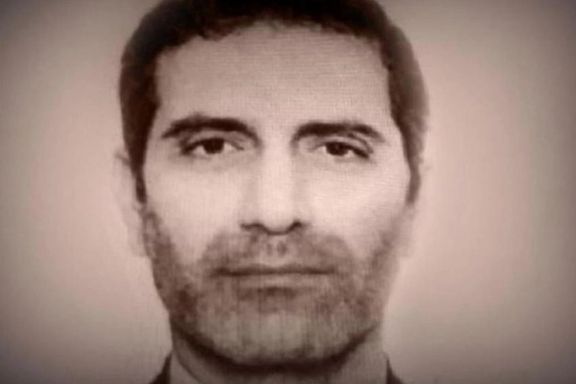
A court in Brussels has temporarily stopped Belgium from extraditing Assadollah Assadi, an Iranian diplomat sentenced to 20 years in jail on a terrorism conviction.
Darya Safai, an Iranian-born member of the Belgian parliament, released a document by the Brussels Court of Appeal on twitter on Friday evening showing the decision.
Following numerous complaints after the Belgian Parliament ratified a controversial prisoner swap treaty with Iran on July 20, the court ordered that Belgium be “provisionally prohibited from releasing Assadi […] from the Belgian prison where he is serving a sentence of 20 years […] and transferring him to any foreign state whatsoever.”
Assadi is imprisoned for “attempted murder and involvement in terrorism” for his role plotting to bomb a gathering of the exiled opposition group Mujahedin-e Khalq Organization (MEK) near Paris in 2018.
After being rejected by the court of first instance in Brussels on Thursday, the opponents of the prisoner-swap deal with Tehran -- including victims who had registered as civil parties to the trial -- won their appeal on Friday.
Georges-Henri Beauthier, a lawyer acting for the National Council of Resistance of Iran – an umbrella organization with MEK as its main member, said that according to the order, any proposed release of Assadi be subject to “cross-examination before a judge”.
The court noted that the rights of the plaintiffs “could be irreparably violated” if Assadi were handed over to the Iranian authorities, without allowing the decision to be legally challenged and confirmed by a judge through an adversarial procedure – a hearing where both parties are present or represented by a lawyer. The ban will apply until such a hearing is held, the court added.
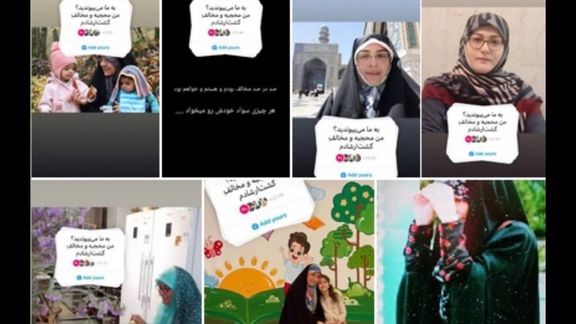
Many Iranian women who wear the hijab by choice have joined a new social media campaign this week against Iran’s hijab enforcement street patrols.
The new campaign began with an Instagram story by reformist activist and sociologist Mohammad Reza Jalaeipur on July 20 when he urged religious women who wear the hijab by choice to oppose the government's pressure on other women to comply with forced hijab.
Jalaeipur’s story went viral and tens of thousands of hijab-wearing women either shared his story or posted their own pictures with the hashtag “I wear the hijab but am against morality police patrols”.
The campaign which is a separate initiative from the anti-hijab campaign launched earlier this month by women’s rights activists has angered many hardliners.
Meanwhile, in a statement Friday, fifteen prominent Iranian figures who are usually referred to as “religious intellectuals”, some of whom have a background in Shiite seminaries condemned the government policy of compulsory hijab and suppression of women.
They also urged religious scholars to display solidarity with Iranian women and condemn forced hijab and tools of suppression such as morality police’s hijab enforcement patrols.
However, hardliner clerics did not mince words in their Friday sermons, calling those who campaign for freedom of choice traitors.
Jalaeipur, a practicing Muslim, has long been speaking against the government's policy of forcing all women to abide by the prescribed hijab rules and argues that imposing these violates the rights of the majority citizens who are against compulsory hijab.
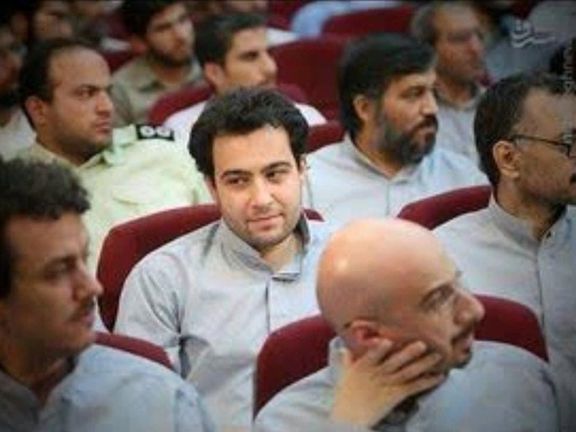
“When are you going to accept that the policy of compulsory hijab has failed and when exactly are you going to revise it?” Jalaeipur had challenged the authorities for a response in a Telegram post on June 27.
Iran’s government which is now fully controlled by hardliners has adopted a harsher than usual approach amid economic crisis and hardship for tens of millions. Government and military officials have warned the population a disobeying hijab rules and the morality police hijab enforcement patrols have detained many women, sometimes violently, on the streets.
The government also designated July 12 as the Hijab and Chastity Day this year and celebrated it with gatherings of women with full hijab at stadiums and other public venues.
Hundreds of thousands have supported the anti-hijab campaign on social media in the past few weeks. Many women have shot videos of themselves with uncovered hair in public places and posted the videos on social media with the ‘No2Hijab’ hashtag to display civil disobedience in reaction to the government’s harsh treatment of women for hijab.
Several activists have been arrested for their defiance of the hijab rules in July including Souri Babai-Chegini, a civil activist who published a video of herself removing her hijab, and Nazi Zandieh, a twenty-one-year-old student who also supported the anti-hijab campaign.
Officials usually insist that complying with hijab rules is “the demand of the majority of Iranians”.
Several surveys in the past few years, including a survey by Gamaan polling agency in the Netherlands, show that more than 50 percent of all Iranians and 75 percent of citizens in larger cities including the capital Tehran, oppose the compulsory hijab rules.
Results of surveys conducted by Iranian government agencies are usually not made public but according to Mehdi Nasiri, the former managing director of the hardline Kayhan newspaper, a survey carried out by the ministry of Islamic guidance in 2015 showed that more than 70 percent of Iranians did not agree with compulsory hijab.
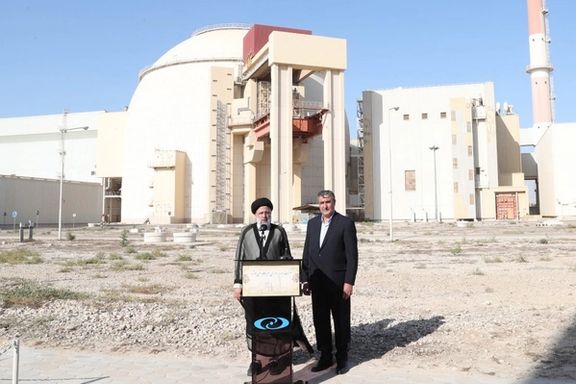
Iran's nuclear chief says construction projects for phase two and three of the Bushehr Nuclear Power Plant have accelerated since a few months ago.
Mohammad Eslami, vice president and the head of the Atomic Energy Organization of Iran (AEOI), said on Friday that since President Ebrahim Raisi made a visit to the site in January, the pace of the projects have changed thanks to the president’s emphasis.
Eslami did not elaborate on the details nor did he mention that Russia is responsible for the projects.
Vienna negotiations hit a bump in the road on March 5 when Russia asked that sanctions for its invasion of Ukraine should not impact implementation of a revived 2015 nuclear deal , the JCPOA. Moscow later said it received the needed assurances from the US.
The Bushehr reactor is not part of the current nuclear dispute between the West and Iran, as Russia handles the nuclear fuel cycle. Iran has been enriching uranium and stockpiling more purified fissile material at other facilities.
The United States had expressed reservations about Russia building the Bushehr nuclear power plant but finally relented in late 2000s, saying that as long as Russia controls the fuel, it did not see the project as a proliferation risk.
Russia commissioned Iran's first nuclear power plant, Bushehr, in 2011. It has one operational unit that generates 1,000 megawatts, providing less than two percent of the country’s electricity.
Iran is expanding the Bushehr reactor to generate more electricity as the country suffers from a chronic shortage of electrical power, with daily outages that cripple industry and anger home consumers.